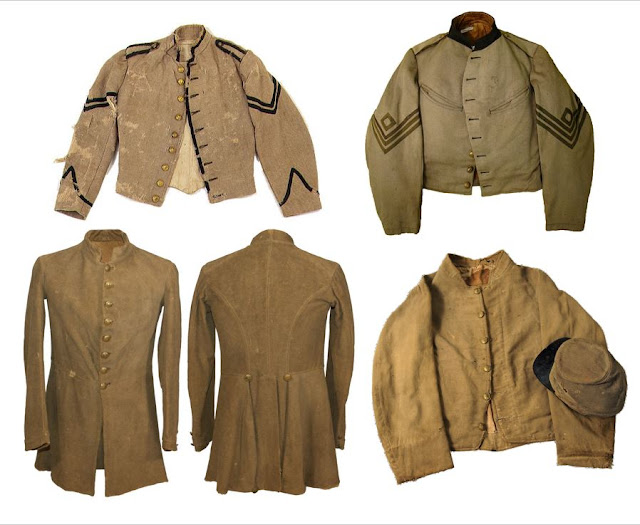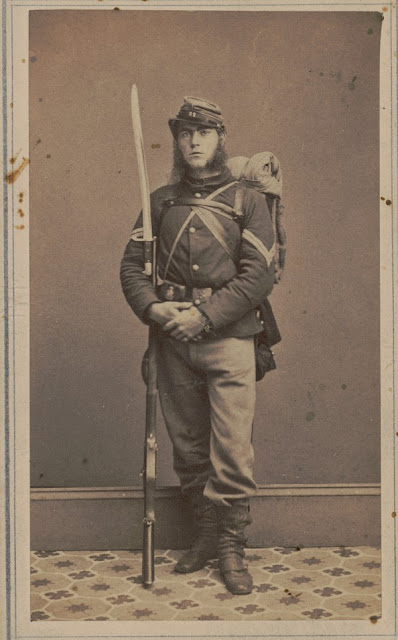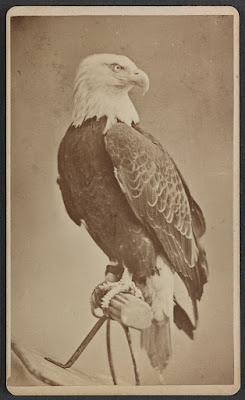Rocky Mountain Boys Show Their Metal: With the 1st Colorado at Apache Canyon
Writing to his sister in Michigan, Sergeant William F. Hall of the 1st Colorado spoke of the thrill and terror he experienced when charging the Confederate guns at Apache Canyon in New Mexico Territory on March 26, 1862, one of the preliminary engagements of the larger Battle of Glorieta Pass.
"I have been where rifle balls fell like hail, where man met man in deadly strife, and where all the evil passions of a man’s nature were aroused and some of the nobler ones, also," he began. "Captain Cook took the lead and gave the command to charge. I was at the left of my section- you should have seen us as we flew up that canyon like a whirlwind and fell on to their forces like a thunderbolt. But many a fellow fell to rise no more before we had passed half through the raking fire. We had passed through or over two-thirds of the distance and I still remained unharmed although the bullets flew like hail about me. Some passed through my overcoat which was held fast to my saddle behind me. Two bullets passed through my blouse that I had on. At last, one struck me on the backbone and passed under the shoulder blade and brought me to the ground."
Hall wasn't done fighting. "I was shot from my horse close by a ledge of rocks," he continued. "Just above my head upon the mountain was a party of Texans. I got upon my knees and loaded my carbine, poked the muzzle through some bushes that grew upon the edge of the rocks, and had the satisfaction of sending one big six-footer to his long home. He was loading his rifle and partly concealed by a rock."
Sergeant Hall’s lengthy missive describing the action at Apache Canyon and the subsequent Battle of Glorieta Pass first saw publication in the May 28, 1862, edition of the St. Joseph Traveler published in St. Joseph, Michigan.
 |
| This painting by Domenick D'Andrea depicts the charge of the 1st Colorado at Apache Canyon on March 26, 1862 led by Captain Samuel H. Cook. Sergeant William F. Hall was among those riding with Captain Cook and like his captain was wounded in the charge. Shot through the back, Hall fell from his horse but continued firing on the Confederates. This image appears courtesy of the National Guard Bureau. |
New Mexico
Territory
March 30,
1862
I have been where rifle balls fell
like hail, where man met man in deadly strife, and where all the evil passions
of a man’s nature were aroused and some of the nobler ones, also.
We left Fort Union with the intention
of marching on Santa Fe and engaging the enemy that was stationed there and
which we understood to be small. From there we calculated to march on
Albuquerque but our plans were all frustrated. Twenty miles from Santa Fe is a
canyon or deep ravine between two large hills of mountains. The canyon is about
one-half or three-quarters of a mile long and very narrow in some places so
that not more than four horsemen could ride abreast. At other places, it was a
quarter of a mile wife with spurs of the mountains running out from both sides.
Our command, consisting of 1,200 men,
were at Burnel Springs 45 miles from the canyon. When word came that 600 of the
enemy had taken possession of the canyon, Colonel John Slough, our commander, gave
orders for 400 of the command consisting of our company (Co. F), two companies of
mounted rifles belonging to the regulars, and part of Cos. A and E of the 1st
Colorado Infantry, to make a forced march of 40 miles and drive the enemy from
the canyon.
 |
| Colonel (later General) John P. Slough |
We left camp on the evening of the 25th
and marched 35 miles before camping at a ranch 10 miles from the canyon. Our
first lieutenant took 20 of our boys with him and went out on picket guard.
About daylight, he spied four of the enemy pickets in a hollow. He surrounded
them and took them prisoners.
On the morning of the 26th at
about 10 o’clock, we started for the canyon, the infantry companies out ahead,
our company next, the regulars bringing up the rear. At 1 o’clock, we came to
the mouth of the canyon. We had hardly entered it before our advanced guards
were seen retreating in hot haste. Directly in their rear came the enemy with
their Secesh flag flying, but they came to a sudden halt when they saw our
forces so near at hand. Then commenced the battle.
The infantry and mounted rifles were
divided into two parties and deployed off as flankers with orders to march
along the side of the mountains, part on the right and part on the left. At the
same moment that this movement was made, the enemy commenced firing on us with
their cannons, throwing shot and shell as fast as they could load and fire. I
may as well here state that none of us were injured from the cannons as all of
their balls flew too high. Our brave boys soon made them retreat.
The cannons fell back a quarter mile up the canyon where their
main forces were concealed behind rocks and trees. There they waited for us to
attack, expecting that we would march up through the canyon then they could
pour their fire upon us from both sides while they would be sheltered behind rocks
and trees from our rifles. We had no cannons along with us as the battery was
back with the main command.
 |
| This map by the American Battlefield Trust depicts the action at Apache Canyon on March 26, 1862. Sergeant William F. Hall was part of Co. F which is depicted at the center charging along the road against the two-gun Confederate battery. |
But we were not such big of fools as they supposed for they
soon found that the Rocky Mountain boys were perfectly at home among the rocks
and could climb the mountains as well as themselves. Our boys sprang from tree
to tree and rock and rock and wherever a Rebel showed himself, crack went a rifle
and down went the rascal.
About 600 yards up the canyon above our line of battle was
the main body of the enemy in an open space protected by a spur of the
mountain. The mountains from this main force were lined on both sides of the
canyon with Texans ready to fire down on our men who were driving them slowly
back up the canyon. Where was Co. F all this time, you ask? We were sitting
quietly on our horses looking on. But now came the time for us to show what we
were made of, whether we were of the true metal or not.
Major Shivington, who was in command, came to us and asked if
we were willing to charge up that canyon into the main body of the enemy and
try to take their cannons? Every man of us shouted ‘yes!’ but my God, what had
we before us? Running the gauntlet between two bodies of Indians was nothing
compared to it. We had to receive the crossfire of the enemy from both sides of
the road besides receiving a heavy fire from the main force in front, but we
flinched not. The road was so narrows that we could not charge in platoons so
we had to charge by fours, that is we rode four abreast.
Captain [Samuel H.] Cook took the lead and gave the command
to charge. I was at the left of my section- you should have seen us as we flew
up that canyon like a whirlwind and fell on to their forces like a thunderbolt.
But many a fellow fell to rise no more before we had passed half through the
raking fire. We had passed through or over two-thirds of the distance and I
still remained unharmed although the bullets flew like hail about me. Some
passed through my overcoat which was held fast to my saddle behind me. Two
bullets passed through my blouse that I had on. At last, one struck me on the
backbone and passed under the shoulder blade and brought me to the ground.
Captain Cook was shot off his horse with four bullets through his limbs just
after the boys passed through the enemy ranks.
We drove about a hundred men upon the hills while the rest
retreated. The boys then dismounted and poured such a heavy fire upon them on
one side while the infantry boys were on the other side of them that they soon
surrendered- we took 100 prisoners. The Texans lost 58 killed and wounded
besides all those we took prisoner. The loss on our side amounted to 16 killed
and wounded, 11 of that number belonging to Co. F. I was shot from my horse
close by a ledge of rocks. Just above my head upon the mountain was a party of
Texans. I got upon my knees and loaded my carbine, poked the muzzle through
some bushes that grew upon the edge of the rocks, and had the satisfaction of
sending one big six-footer to his long home. He was loading his rifle and
partly concealed by a rock. I shot him through the heart, I think, as he fell
dead.
 |
| Major John S. Chivington 1st Colorado Infantry |
Our boys picked me up and carried me to an ambulance and put
me in. I found Captain Cook in there suffering worse than myself, so I bit my
lips and said nothing. Old Major Shivington had the face to come to the
carriage and ask me if I had pneumonia! I should like to have pulled his nose
and think I should had done so if I had not lost so much blood.
We were taken to Pigeon Ranch five miles from the
battleground. The fight lasted from 1 o’clock until half past 4. It was dark
when we arrived at the ranch and we found good quarters there. Our wounded and
dead were all brought there as well as some of the enemy’s. We treated their
wounded the same as we did our own. The next morning, one of the captains from
the enemy came into camp with a flag of truce with a request from his
commanding officer that we would grant them 24 hours armistice so that they
could have time to bury their dead. It was granted, of course. He told Captain
Cook that he was in the Mexican War and had been in a good many battles but had
never seen such a desperate charge made before. He thought his men must have
been panic stricken or they would have killed more of us than they did, and no
wonder, for it is enough to make a man feel shakey to see a hundred horses coming
at full speed in one close mass upon you, their riders yelling like so many
demons, their drawn sabers ready to hew them down like dogs. So ends the first
battle.
On the morning of the 27th, news came in that the enemy
was marching through Santa Fe in large numbers to reinforce this command. A
messenger was started back to Colonel Slough with the news so he could hasten
up with the main command to our support. On the morning of the 28th
at 9 o’clock, the enemy were spied coming down the canyon and still our command
had not come up. At 10 o’clock, though, our command arrived. At the same
moment, the enemy opened fire upon our ranks which were drawn up close to the
ranch where I lay. The battle then commenced in good earnest.
Our boys fought bravely and repelled the enemy at every
point. In the meantime, Major Shivington took 400 of the command and went
around the back road file miles till he came to the canyon in the rear of the
enemy where they had left their train of wagons guarded by just 200 men and two
pieces of cannon. He whipped out the 200 in less than no time, spiked their
guns, blew up their powder wagons, and burned all their wagons, provisions,
blankets, and everything they had and shot all their mules except for a few
they brought away.
While the major was doing this, the fight was raging hot
between the enemy, some 2,000 strong, and our force consisting of about 800
men. The house where I lay was between the two fires and I expected to see a
ball or shell come crashing through the roof every minute. The fight lasted
from 10 o’clock till 4:30 in the evening. Sometimes the Texans were driven back
and sometimes our party was.
About 2 o’clock in the afternoon, our party fell back and
took a new position about a quarter of a miles from the ranch, which of course
threw the ranch into the possession of the enemy. They came rushing in there
but when the hospital steward told them that there was none there but the dead
and wounded, they behaved very much like gentlemen and withdrew. One of their
captains said we might consider ourselves as prisoners of war, then they
commenced bringing their own wounded in but did not disturb us. One of their
majors, a very gentlemanly fellow, said that our men fought more like devils
than human beings.
At 4 o’clock, our command fell back five miles where they could get water as there was none nearer, but the Texans did not follow them up. They had enough of the ‘Rocky Mountain Tigers’ as they call us. George Pearce, belonging to Co. F, shot one of their majors and took two ivory-mounted revolvers from him. They lost two majors, one captain, and 200 killed; the number of wounded is not yet known. Their train was also destroyed which hurt them the most of all as powder is scarce with them. The enemy retreated back to Santa Fe while our troops have been ordered back to Fort Union as they expected that General Sibley was marching from another direction to attack it. Our loss in the battle was 30 killed and 60 wounded. Our hospital is five miles from the battle ground. I have been two days writing this letter; the surgeon says I must not write anymore as it irritates my wound to sit up so much.
To learn more about the Battle of Glorieta Pass, please check out this post:
Squirrel Hunting the Rebels at Glorieta Pass (1st Colorado Infantry)
Source:
Letter from
Commissary Sergeant William F. Hall, Co. F, 1st Colorado Volunteer
Infantry, St. Joseph Traveler (Michigan), May 28, 1862, pg. 1











Comments
Post a Comment